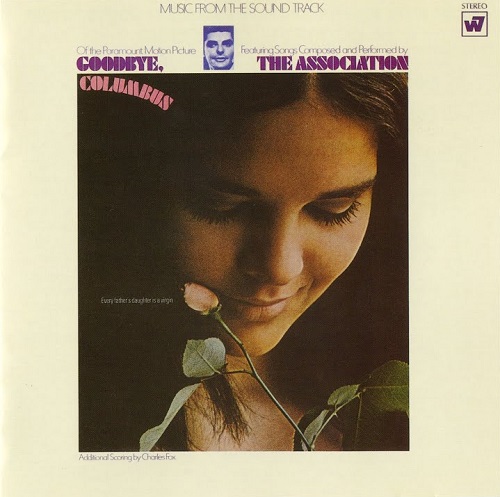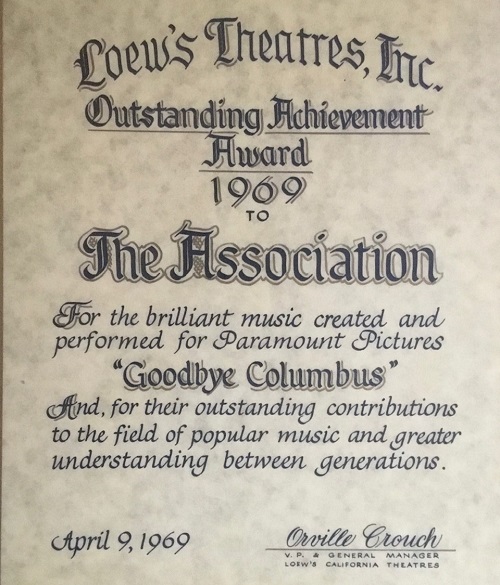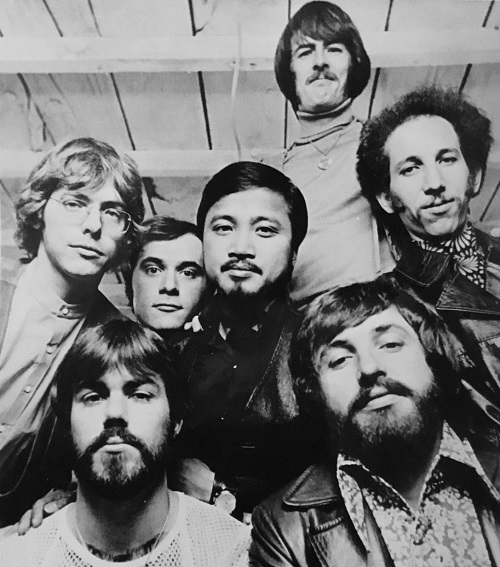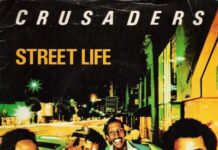Photos courtesy of Russ Giguere
Every Sunday night when I was growing up meant movie night with my father. Usually my sister and I would pick from a round robin of titles (some much more advanced in content for our impressionable young ages) – Hoosiers, On Golden Pond, and Brighton Beach Memoirs being some of the standouts.
And then there was another title I would find myself quoting dialogue from for years, even if I wasn’t completely understanding the adult themes being conveyed on screen.
The film was Goodbye, Columbus, based on the coming-of-age National Book Award-winning novella from acclaimed author Philip Roth. For its time (1969), the movie would touch on some landmark societal taboos — premarital sex and class distinctions included — all encapsulated in the whirlwind and fraught chemistry between main characters Neil Klugman and Brenda Patimkin, played by Richard Benjamin and Ali MacGraw, respectively.
The movie would also become a classic in my eyes for its unique soundtrack, masterminded by one of the most underrated bands of all time (not just the decade they spent conquering the charts) — the Association.
Hailed for their trademark vocal harmonies and clean-cut look hailing straight from the folk movement, the band – initially calling themselves The Men — would become Billboard’s best friend with radio staples like “Along Comes Mary,” “Cherish,” “Never My Love,” and “Windy.” “Along Comes Mary” would raise eyebrows over its supposed ties to marijuana (a myth original member Russ Giguere says is completely false). The latter two songs — one preppy, one trippy — would be among the most played radio tracks of all time, with millions-plus rotations to this day and still counting. At one point, they were so popular that master songsmith Jimmy Webb wrote “MacArthur Park” specifically with them to record.
“When we started, we had a two-year plan. We rehearsed five to six months before we played anywhere. If we didn’t have a top 40 record in two years we would disband,” Giguere told me recently. “A year-and-a-half later ‘Along Comes Mary’ is our first hit. We were happy as clams. The next release (‘Cherish’) went to Number One. We were stoked.”
We were working so much in those days. If we weren’t making an album we were touring,” he adds. “We did so many great shows — 97, 98 percent standing ovations. We were an excellent band.”
At the band’s commercial peak, in addition to Giguere, the Association would boast the talents of drummer Ted Bluechel, Jr., bassist Brian Cole, guitarist Jules Alexander, wind instrumentalist Terry Kirkman, guitarist Larry Ramos, and vocalist and guitarist Jim Yester. The band would have the distinction of being one of the most inclusive bands of the era, in tandem with acts like the Chambers Brothers and Sly and the Family Stone.
“We never thought about it as a mixed-race band,” Giguere said. “We were all humans.”
With five Top 10 singles, the group has yet to be inducted into the Rock and Roll Hall of Fame, let alone be included on any inductee ballot. It’s just not right, in my opinion… especially since the band wasn’t always as squeaky clean as they appeared to sound musically. They could inject just the right amount of edge in harder songs like “Requiem For the Masses” and “Six Man Band.”
“We honestly expected to be successful, but we were much more successful than we had planned even,” Giguere said. “It may have taken some guys by surprise but we knew what we were doing. We were one of the best concert acts in the world. Hardly anyone could surpass us.”
By the close of the 1960s though, musical tastes would change and like the times surrounding them the Association would grow more experimental. Albums like 1968’s Birthday and 1969’s The Association (dubbed Stonehenge by band members) showcase members not afraid to embrace the counterculture. After all, we must remember this is a band that played the same Monterey Pop Festival stage that Janis Joplin and Jimi Hendrix did, even if they didn’t light any instruments on fire.

Sandwiched in between both albums though is the soundtrack for Goodbye, Columbus, a work that doesn’t get the same attention as, say, Simon & Garfunkel’s soundtrack for The Graduate but should. This is because even though it has transitional instrumentals, the album is anchored by defining and standout tracks.
In the case of Goodbye, Columbus, these songs include particular the jubilant title track penned by Yester; Ramos’ sweet and sensual “It’s Gotta Be Real;” and the plaintive and reflective “So Kind to Me,” written by Kirkman. Any one of these on their own had the potential to be a hit song and could have easily melded with the band’s arsenal of hit tunes. Yet together, in this order, the songs beautifully depict the rising and falling arc of Neil and Brenda’s whirlwind summer into fall relationship — from introduction, to consummation, to abrupt breakup — all complemented by outside familial influences, professional insecurities, and desire versus reality.
Tasked with composing the soundtrack for the film the first opportunity of its kind for the Association — group members came in without any initial ideas or prompting from Warner Brothers executives, according to Giguere.
“I believe (the songs) were all written from scratch,” he told me. “It was really fun to see the movie without a soundtrack. They showed the movie and said, ‘You guys write a soundtrack for it.’ It was a challenge. I think they pointed out where they wanted music in a couple of places. Mostly they just let us watch the movie.”
Yester’s “Goodbye, Columbus” would be picked as the chosen single for release. Yet despite its unabashed sunny optimism and “Windy”-like vocal harmony layers, the track would only peak at Number 80 on the Billboard Hot 100.
“I always thought they released the wrong tune as a single. I always thought they should have released Larry’s tune, ‘It’s Gotta Be Real,’ as a single. It was great fun to sing and a beautiful song,” Giguere said. “I think if they released that, it would have been a hit song and a bigger hit movie, though the move itself was quite successful. It almost sounded like a Motown tune, us doing it.”
Side note, Giguere, an avowed bibliophile as described in his memoir Along Comes The Association: Beyond Folk Rock And Three-Piece Suits, did not read Roth’s work as a template for he or the rest of the band to build songs shaping the collective soundtrack.
“I hadn’t read the book and I was pretty well read,” he said. “By that time, I had probably read 2,000 books but I never read that one.”
Still, the group’s efforts in the world of film weren’t for naught. The song “Goodbye, Columbus” would receive a Golden Globe nomination for Best Original Song (losing out to “Jean” from The Prime of Miss Jean Brodie). Additionally, the Association would receive an Outstanding Achievement Award from Lowe’s Theatres. Yet the group’s forays into film work would stop with this movie as they quickly resumed album work.
“I just thought of it as a fun project. Our careers just continued on,” Giguere said. “I’m sure we wanted to do more [films] but never did. Our songs though were in a lot of movies.”
Member departures and the untimely death of Cole in 1972 would break apart the best-known incarnation of the Association, though the group has since reformed multiple times over the past four decades and still performs to this day with originals Yester and Alexander front and center in the group, along with Ramos’ brother Del on bass, guitarist Paul Holland, drummer Bruce Pictor, and Cole’s son Jordan on keyboards.
Though retired from touring with the band, Giguere remains with them in a management capacity. He says even though the Association’s film foray was short-lived, it still proves meaningful to the collective group experience.
“I don’t remember anyone having anything negative to say. I don’t remember any particular stresses,” he says. “It was a great break.”

***
Share your feedback and suggestions for future columns with Ira at vinylconfessions84@gmail.com. Ira’s new book, “Hello, Honey, It’s Me”: The Story of Harry Chapin, is available for purchase here.




















